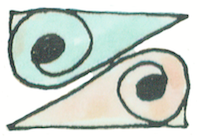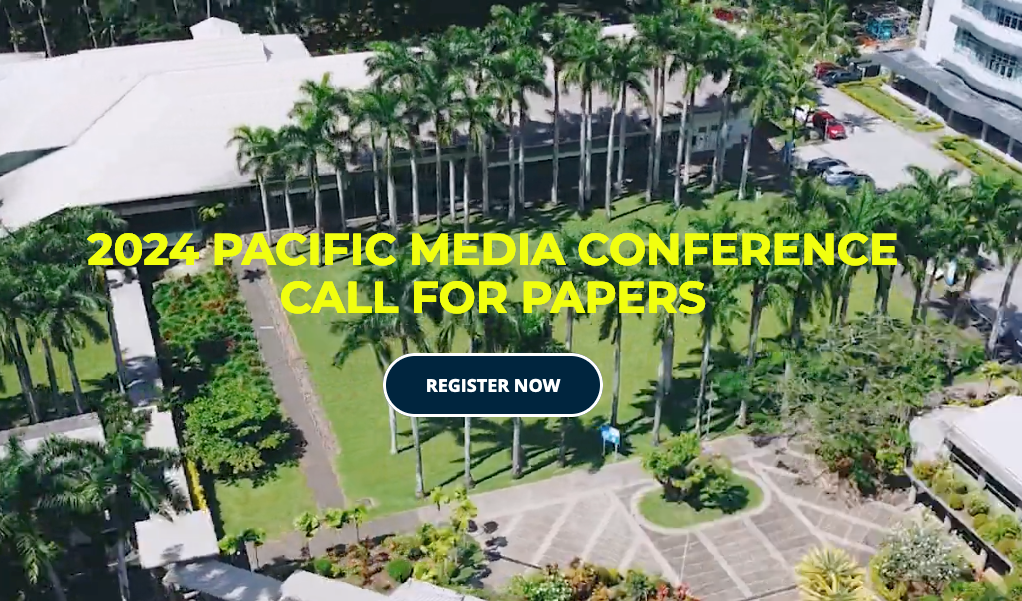Analysis of a beat-up: The structuring of a sensational media story
Abstract
Media beat-ups are sensationalised stories that greatly exaggerate or misrepresent the significance of otherwise unremarkable events or issues. To illustrate how beat-ups can be analysed, a front-page story in Sydney’s Daily Telegraph newspaper in the context of the US-led global war on terror is examined in terms of its venue, the journalist and the content of the story. The features of a beat-up may be less arbitrary than they appear on the surface.
Downloads
Metrics
References
The following references have been extracted and will be linked to the submission metadata.
Adut, A. (2008). On scandal: Moral disturbances in society, politics, and art. New York, NY: Cambridge University Press.
Akerman, P. (2014, December 12). ABC wasting our time on a loudmouth. Daily Telegraph, p. 72.
Akerman, P. (2015, February 20). The difference between ‘innocent’ and innocent. Daily Telegraph, p. 36.
Anderson, D. (2012). The Terrorism Acts in 2011: Report of the Independent Reviewer on the Operation of the Terrorism
Act 2000 and Part 1 of the Terrorism Act 2006. London: The Stationery Office.
Article 19 (1996). Broadcasting genocide: Censorship, propaganda and state-sponsored violence in Rwanda 1990-1994. London, UK: Article 19.
Beckford, M. (2012, June 28). Bee stings killed as many in UK as terrorists, says watchdog. The Telegraph. Retrieved on 5 September 2018, from https://www.telegraph.co.uk/news/uknews/terrorism-in-the-uk/9359763/Bee-stings-killed-as-many-in-UK-as-terrorists-says-watchdog.html.
Bednarek, M., & Caple, H. (2012). News discourse. London: Continuum.
Blizzard, E. (2017). Peace journalism in Palestine’s BDS campaign. Peace Review 29, 467–474.
Bolt, A. (2017, May 26). David Hicks’ estranged wife gets PhD for conspiracy theory. Herald Sun. Retrieved on 6 September 2018, from https://www.heraldsun.com.au/blogs/andrew-bolt/david-hicks-estranged-wife-gets-phd-for-conspiracy-theory/news-story/886f2cb67fa2bd255eac2a51c20afdbc
Brighton, P., & Foy, D. (2007). News values. Los Angeles, CA: Sage.
Brooks, A. (2016). The annihilation of memory and silent suffering: Inhibiting outrage at the injustice of torture in the War on Terror in Australia. Unpublished doctoral thesis, University of Wollongong. Retrieved on 4 September 2018, from http://ro.uow.edu.au/theses/4865/.
Campbell, W. J. (2001). Yellow journalism: Puncturing the myths, defining the legacies. Westport, CT: Praeger.
Cohen, S. (2002). Folk devils and moral panics [3rd Ed.] London, UK: Routledge.
Devine, M. (2014, December 14). Whingeing Hicks has a lot to say sorry for. Daily Telegraph, p. 17.
Devine, M. (2015, February 22). Hicks should say he’s sorry. Daily Telegraph, p. 17.
Dowdell, A., & Fewster, S. (2016, November 22). Terror accused on bash charge. Daily Telegraph, p. 6.
Dunn, M. (2001, December 13). My son has betrayed us—he’s a terrorist, says his father—a traitor to his country. Daily Telegraph, p. 1.
Eddie, R. (2017, May 26). Un-bee-lievable! Wife of Guantanamo Bay inmate David Hicks’ awarded PhD—for claiming BEES are more dangerous to Australians than TERRORISTS. Daily Mail Australia. Retrieved on 6 September 2018, from http://www.dailymail.co.uk/news/article-4543220/David-Hicks-wife-PhD-bees-terrorism.html
Entman, R. M. (2012). Scandal and silence: Media responses to presidential misconduct. Cambridge: Polity.
Gareau, F. H. (2004). State terrorism and the United States: From counterinsurgency to the war on terror. London, UK: Zed Books.
Gittins, R. (2017, July 26). The biggest scam and why we buy it. Sydney Morning Herald, pp. 20–21.
Hager, N. (2014). Dirty politics: How attack politics is poisoning New Zealand’s political environment. Nelson, NZ: Craig Potton.
Harris, C. (2018, August 8). Degrees of hilarity. Daily Telegraph, pp. 4–5.
Hawkins, V. (2008). Stealth conflicts: How the world’s worst violence is ignored. Aldershot, UK: Ashgate.
Hicks, D. (2010). Guantanamo: My journey. Sydney, NSW: Random House Australia.
Higgins, E. (2013, December 28). Lynch like ‘publican denying blacks, Jews.’ The Australian, p. 2.
Joseph, S. (2016, February 22). Australia found to have breached the human rights of David Hicks. The Conversation. Retrieved on 4 September 2018, from https://theconversation.com/australia-found-to-have-breached-the-human-rights-of-david-hicks-55120.
Loussikian, K. (2015a, March 25). Row over UOW donations to Libs. The Australian, p. 31.
Loussikian, K. (2015b, June 3). Cash to political parties queried. The Australian, p. 33.
Loussikian, K. (2016, January 13). Uni accepts thesis on vaccine ‘conspiracy’. The Australian, pp. 1, 4.
Loussikian, K. (2017, May 26). Threat level: hive. Daily Telegraph, pp. 1, 4–5.
Martin, B. (2007). Justice ignited: The dynamics of backfire. Lanham, MD: Rowman & Littlefield.
Martin, B. (2016, March 3). News with a negative frame: a vaccination case study. Retrieved on 4 September 2018, from http://www.bmartin.cc/pubs/16Loussikian.html.
Martin, B. (2017). Defending university integrity. International Journal for Educational Integrity 13(1), 1–14.
Martin, B. (2018). A cruel sting on a PhD graduate: Analysis of a Daily Telegraph article. Retrieved on 7 September 2018, from http://www.bmartin.cc/pubs/18Loussikian.pdf.
Meers, D. (2015, February 20). Anger as Shorten claims ‘injustice’ for Hicks. Daily Telegraph, p. 1.
Mueller, J. (2006). Overblown: How politicians and the terrorism industry inflate national security threats, and why we believe them. New York, NY: Free Press.
Nacos, B. L. (2002). Mass-mediated terrorism: The central role of the media in terrorism and counterterrorism. Lanham, MD: Rowman & Littlefield.
Phillips, W. (2015). This is why we can’t have nice things: Mapping the relationship between online trolling and mainstream culture. Cambridge, MA: MIT Press.
Robie, D. (2003). Cyberspace democracy: Freedom of speech dilemmas in Pacific journalism education. UTS Law Review 5, 131–149.
Sabato, L. J. (1991). Feeding frenzy: How attack journalism has transformed American politics. New York, NY: Free Press.
Schmid, A. P., & de Graaf, J. (1982). Violence as communication: Insurgent terrorism and the western news media. London, UK: Sage.
Shafir, G., & Schairer, C. E. (2013). The war on terror as political moral panic. In G. Shafir, E. Meade, & W. J. Aceves (Eds.), Lessons and legacies of the War on Terror: From moral panics to permanent war (pp. 9–46). London, UK: Taylor and Francis.
Sparks, C., & Tulloch, J. (Eds.) (2000). Tabloid tales: Global debates over media standards. Lanham, MD: Rowman & Littlefield.
Thompson, K. (1998). Moral panics. London: Routledge.
Tiffen, R. (2014). Rupert Murdoch: A reassessment. Sydney, NSW: NewSouth.
Toohey, P. (2014, December 13). CIA’s catalogue of dirty deeds. Daily Telegraph, p. 71.
Tuman, J. S. (2003). Communicating terror: The rhetorical dimensions of terrorism. Thousand Oaks, CA: Sage.
Vasterman, P. L. M. (2005). Media-hype: Self-reinforcing news waves, journalistic standards and the construction of social problems. European Journal of Communication, 20(4), 508–530.
Walker, B. (2011). Independent National Security Legislation Monitor: Annual report (Department of the Prime Minister and Cabinet, 16 December). Canberra, ACT: Commonwealth of Australia.
Zulaika, J. (2014). Terrorism: The self-fulfilling prophecy. Chicago, IL: University of Chicago Press.

Copyright (c) 2018 Brian Martin

This work is licensed under a Creative Commons Attribution-NonCommercial 4.0 International License.















